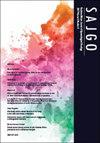Adherence to guidelines on prophylaxis of chemotherapy-induced nausea and vomiting in the National Cancer Institute, Sudan
IF 0.3
Q4 OBSTETRICS & GYNECOLOGY
引用次数: 3
Abstract
Objective : To evaluate the adherence to American Society of Clinical Oncology (ASCO) guidelines for antiemetic prophylaxis of chemotherapy-induced nausea and vomiting and assess the outcomes of the prescribed antiemetic drugs. Methods : This prospective, observational study enrolled chemotherapy-naive cancer patients who were admitted to the National Cancer Institute between May and July 2015 for intravenous chemotherapy. Patient’s demographic data, chemotherapy protocols and types of antiemetic drugs were collected by reviewing patients’ files, chemotherapy prescription forms and interviewing the patients. Results : The data revealed that 90% of pre-chemotherapy antiemetic prescriptions did not adhere to antiemetic guidelines. The trends of non-adherence included an overuse of ondansetron (14%), under-prescribing of dexamethasone (16%) and corticosteroid duplication (14%). Regarding antiemetic use for the prevention of delayed emesis, the data showed that 90% of antiemetic prescriptions were non-adherent with ASCO guidelines, with overuse of ondansetron (20%) and metoclopramide (37%) and lack of dexamethasone prescriptions (80%) on days 2 and 3 being the most frequently reported trends. The percentage of patients with complete response (no emesis or rescue therapy) over 5 days post chemotherapy was 36%. Conclusion : The study indicated an extremely low adherence rate to ASCO guidelines for antiemetic prophylaxis of chemotherapy-induced nausea and vomiting. Non-adherence included a trend of both underuse and overuse of indicated antiemetic medications.苏丹国家癌症研究所预防化疗引起恶心和呕吐指南的遵守情况
目的:评估对美国临床肿瘤学会(ASCO)指南的遵守情况,以预防化疗引起的恶心和呕吐,并评估处方止吐药物的疗效。方法:这项前瞻性、观察性研究纳入了2015年5月至7月间在国家癌症研究所接受静脉化疗的癌症患者。通过查阅患者档案、化疗处方表和访谈患者,收集患者的人口统计学数据、化疗方案和止吐药物类型。结果:数据显示,90%的化疗前止吐处方不符合止吐指南。不依从性的趋势包括过度使用昂丹司琼(14%)、地塞米松处方不足(16%)和皮质类固醇重复使用(14%)。关于预防延迟呕吐的止吐药物,数据显示,90%的止吐处方不符合ASCO指南,其中第2天和第3天过度使用昂丹司琼(20%)和甲氧氯普胺(37%)以及缺乏地塞米松处方(80%)是最常报告的趋势。化疗后5天内完全缓解(无呕吐或抢救性治疗)的患者比例为36%。结论:该研究表明,ASCO指南对化疗引起的恶心和呕吐的止吐预防依从率极低。不依从性包括指示止吐药物使用不足和过度使用的趋势。
本文章由计算机程序翻译,如有差异,请以英文原文为准。
求助全文
约1分钟内获得全文
求助全文
来源期刊

Southern African Journal of Gynaecological Oncology
OBSTETRICS & GYNECOLOGY-
自引率
0.00%
发文量
0
审稿时长
24 weeks
 求助内容:
求助内容: 应助结果提醒方式:
应助结果提醒方式:


